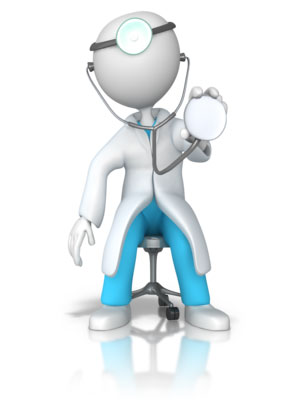 You would be amazed how many people of all backgrounds, professions and interests write to me and ask the very same question, “Why can’t chronic pain be cured?” My response is often detailed and probably confounds more people than it helps, but I must tell the truth of the matter, since this is my field of expertise and watering down the answer provides no service to anyone who is truly interested in the facts. Assume that you are the one asking me this very same question. This essay will provide my answer, based on a literal lifetime of continuing work in the field of chronic pain as an educator, advocate, researcher, coach and most importantly, a patient.
You would be amazed how many people of all backgrounds, professions and interests write to me and ask the very same question, “Why can’t chronic pain be cured?” My response is often detailed and probably confounds more people than it helps, but I must tell the truth of the matter, since this is my field of expertise and watering down the answer provides no service to anyone who is truly interested in the facts. Assume that you are the one asking me this very same question. This essay will provide my answer, based on a literal lifetime of continuing work in the field of chronic pain as an educator, advocate, researcher, coach and most importantly, a patient.
Let’s get the obvious part of the answer out of the way first: Chronic pain can be cured. In fact, some people have terrible chronic pain problems that require treatment, are finally properly diagnosed and the pain resolves with appropriate care. Other patients allow the passage of time to fully heal their pain organically. Regardless of how the cure is enacted, be it drugs, surgery, holistic care, medication or a “miracle”, the pain fades and leaves the person able to continue their life journey without the monumental burden of endless suffering.
Ok, now let’s get back to reality. Most people who suffer from chronic pain do not recover. Their pain does not go away or even lessen with time and treatment. Instead, statistics show that chronic pain tends to worsen, expand and evolve in response to time and treatment. Why does this occur? Why is most chronic pain seemingly impossible to cure? Why does pain become chronic in the first place? The answers to these inquiries form the basis for the remainder of this dissertation.
Misdiagnosis is an unbelievably huge epidemic throughout the healthcare industry. Diagnosis is a subjective science and doctors have evolved their evaluation practices to drastically decrease the amount of time this unprofitable procedure entails, while simultaneously ensuring that whatever verdict is rendered will land the patient into highly lucrative care, preferably of the ongoing or big-ticket variety. Medicine is a revisionist “science” and the theories about what causes pain change constantly. What makes you think that medical science has it correct now, when they have been wrong countless times in the past?
The fascination with structural abnormality has led doctors to interpret diagnostic tests in a skewed and incorrect manner. Just because a bodily structure is aging, degenerated or unusual in form does not mean that it is the definitive source of symptoms. In fact, doctors know for a fact that atypical anatomy does not predict pain, as this is an inherent part of their formal education. It seems that many practitioners disregard this truth once the temptation of unlimited money is dangled in front of them and all they have to do is implicate some structural issue as the source of pain and move ahead to treat that source. After all, the diagnostic evaluation provides all the “proof” that the patient could ever want once they see the current “imperfect” condition of this implicated structure compared to “textbook perfect”. What most people do not seem to know is that basically ALL of the diagnoses blamed on atypical structure due to age and injury are perfectly normal and almost universally expressed in the human form, including in their doctor’s very own body.
Symptomatic care has become the rule of thumb for virtually all types of chronic pain. Long gone is the idea of actually trying to permanent end the pain. Instead, modern medicine generally focuses on managing pain. Now there is nothing wrong with dealing with pain if it truly can not be cured. However, coping with suffering is a cruel fate to endure when a real cure could be available. Although coaching helps people to manage pain that can not be cured, the simple fact is that many painful issues can be resolved if they are only properly diagnosed and appropriately treated with a curative modality rather than a symptom-targeting practice.
Conditioning and nocebo effect play huge roles in the ongoing expression of pain. Patients can suffer a verifiable psychoemotional injury in the form of the nocebo effect from any negative influence during the diagnostic or treatment processes. Patients might think they are truly damaged due to the words a doctor uses or the “evidence” they are shown during their evaluation. They might also come to believe themselves to be damaged goods when their body refuses to respond favorably to treatment. There are unfortunately seemingly endless times when the nocebo effect can creep unto a patient’s mind, causing lingering health consequences that might prevent recovery from any type of pain, even if the structural reason, if any is applicable at all, is already resolved.
Mindbody pain syndromes are an epidemic occurrence and have confounded doctors in the modern medical system. Ironically, many years ago, most doctors completely understood and accepted that all matters of mind and body are intimately connected. These caregivers had no problem linking physical expressions of pain to psychoemotional concerns. However, since this practice is counterproductive to running a lucrative medical business, the Cartesian philosophy of healthcare has taken complete control with devastating effects on society in general. If I had to blame the modern outbreak of unresponsive chronic pain on any one single factor, this would surely be it. Doctors can diagnose a plethora of structural abnormalities of the body and “fix” them using all manner of often dangerous and invasive techniques. However, pain most commonly persists or simply changes to a new destination, pointing out the most frequently committed medical crime in existence today: the purposeful ignoring of the relationship between the mind, the body and chronic pain.



